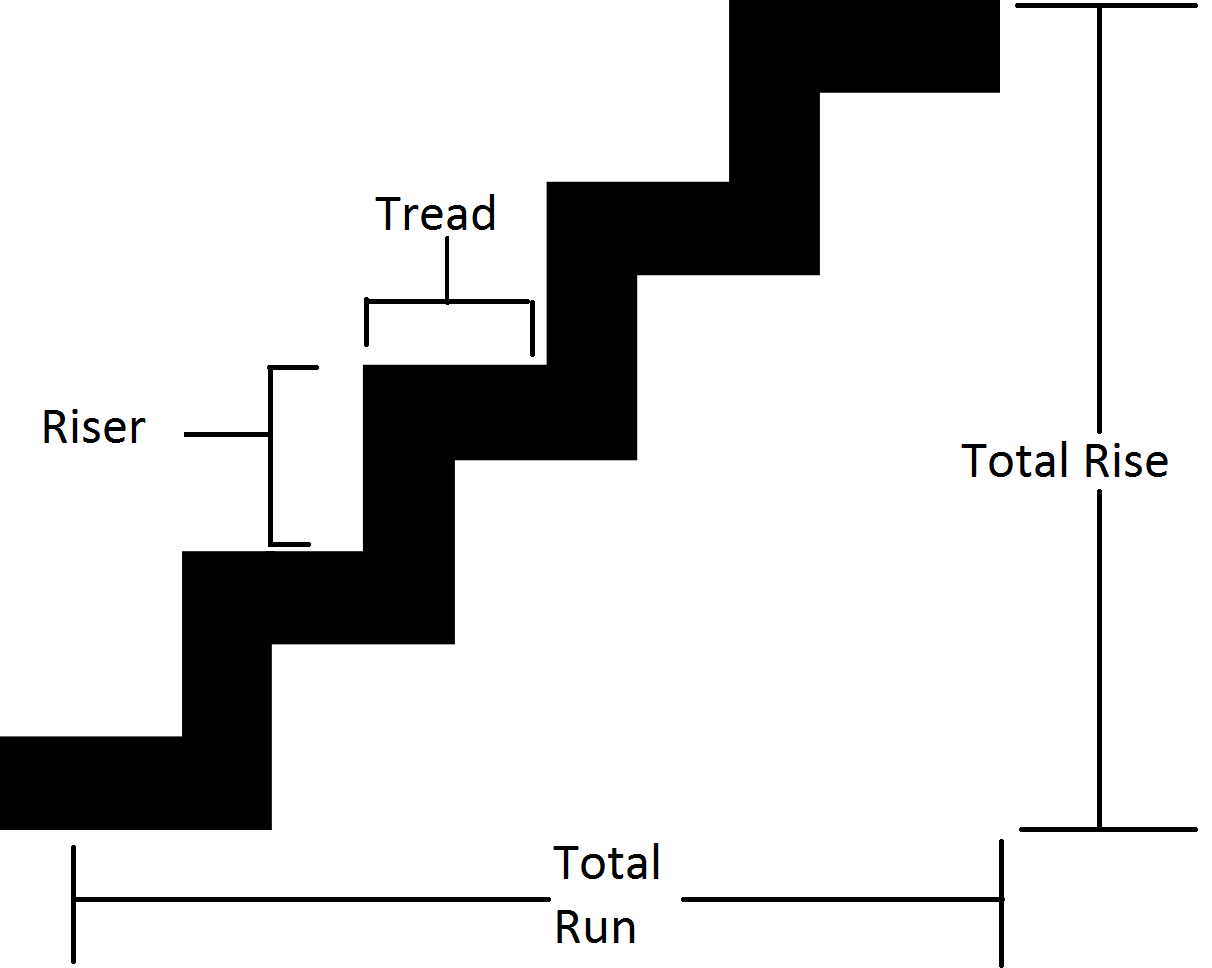Building Stairs
whether you are building your first pair of stairs or if you are just looking for a calculator to double check your math, This will help you to determine the amount of steps, stringers and the actual rise of each step necessary to have a professional looking set of stairs.
Terminology
Incase this is your first time building stairs there is some basic terminology you should be made aware of to make diagrams more clear. These are
- Total rise- This is the total height from finished floor to finished floor
- Total run- This is the total length of your stairs
- Riser- This is the vertical section on the back of each step. While risers are not mandatory they are recommended. Without risers stringers are more exposed to the elements and are likely to crack, chip or split more frequently.
- Tread- This is the horizontal part of the stair that you actually step on.

Before you Begin
While the task in front of you can be difficult there are some basic conditions you can check to get a good start. First make sure that both floors are level. This will help to ensure that your measurements will be correct from any corner. After you are sure that your starting points are level measure the total rise. This will be needed for every step of the process so write this number down someone in inches(for example write 62 3/4 inches instead of 5 feet 2 and 3/4 inches). next measure your width of your stairs(also write this down in inches). The final item you want to be aware of is if you have a length restriction. This means that you will not be able to have a straight stairway but instead you will need to have an L with at least 1 landing.
Stringers
The amount of stringers are dependent on how wide your stairs are. in my research I have found that most construction companies will use a stringer for every 16 inches(1 foot and 4 inches) to eliminate treads from sagging as they age. "Typically the minimum width permitted in residences is around 2 feet 8 inches. Three feet is better, and 3′6″ is the standard for normal occupancy. If a stair is more than 44 inches wide, a handrail is required on both sides"(according to http://sizes.com/home/stairs.htm)
Cutting your Stringers
After you have cut your stringers to slide into place.Starting at the top use your square to draw your cuts for both your riser and thread. If you are unsure of the size of your tread most building code requires a minimum of a 10 inch tread. When cutting your notches for your stringers make sure your circular saw does not travel past your line, merely get close to the line. After you have the preliminary cuts made on your stringer go back with either a jigsaw or handsaw and cleanly finish your cuts for the notches. Along with the notches for your treads and risers you should also cut a notch at the very end of your stringer for a 2x4 to sit in. This is so that you can anchor your stairs more easily.
Third Party Videos To Help
Part 1(the math behind building stairs)
Equations and Data Items
Collections
- Comments
- Attachments
- Stats
No comments |
